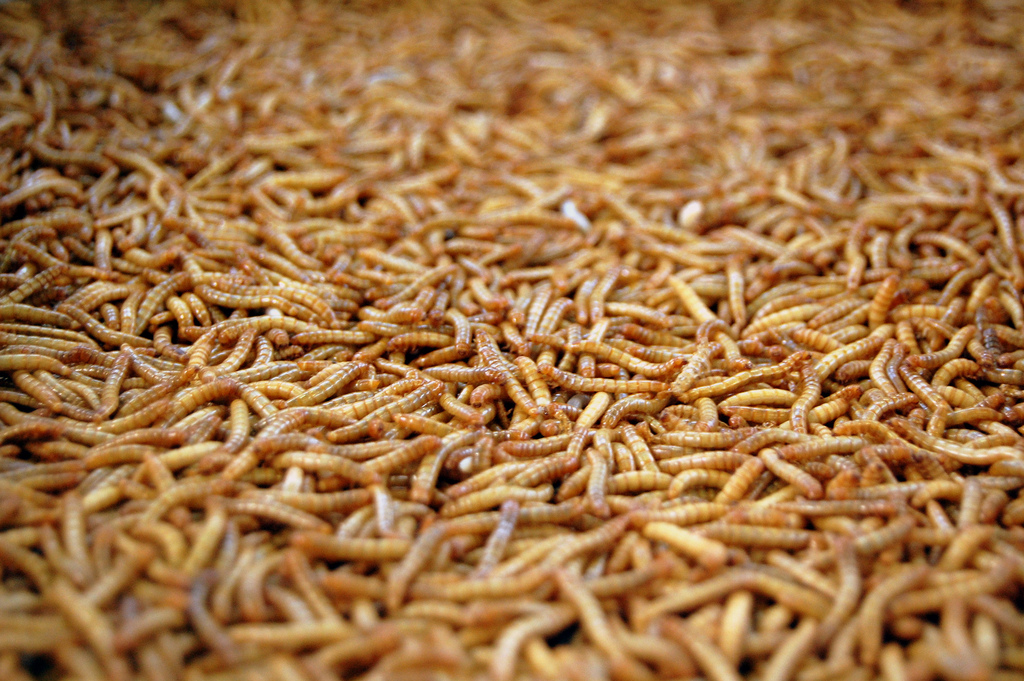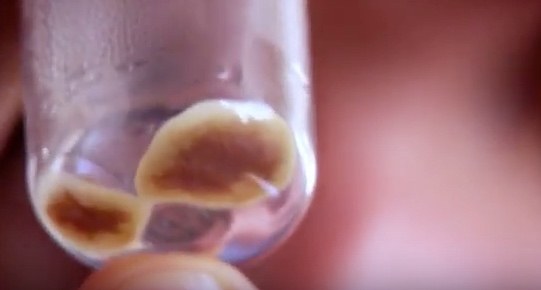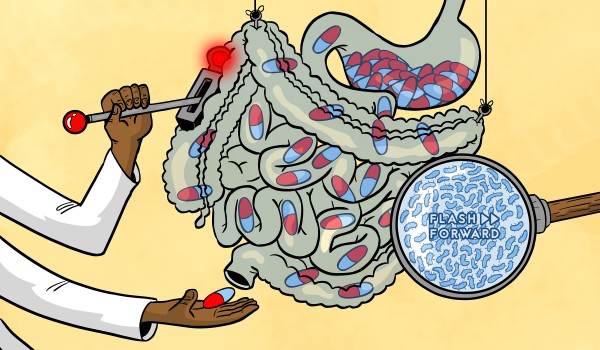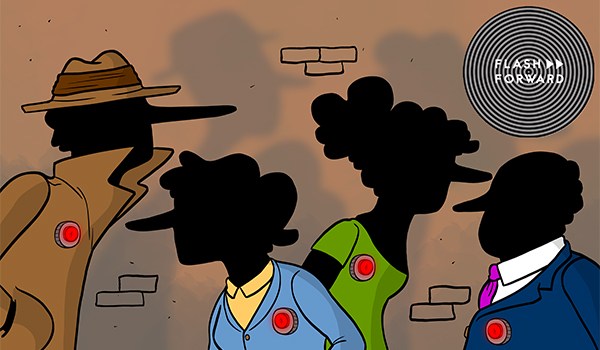
NC State University researcher Max Scott and colleagues have engineered a strain of transgenic blueflies whose maggots secrete human growth factor, which they hope to use to fight infections in patients with non-healing wounds for whom antibiotics do not offer any hope.
Read the rest

Disappointingly, these heatmaps of human bodies whose owners are experiencing various emotional states were not produced with infrared cameras, but rather with self-reporting by subjects being asked to say where they were experiencing more and less sensation while watching videos and seeing words intended to trigger those emotions.
Read the rest

Textbook giant Houghton Mifflin Harcourt publishes Randall Munroe's amazing Thing Explainer, and a lucky accident happened when someone in the textbook division noticed Munroe's amazing explanatory graphics, annotated with simple language (the book restricts itself to the thousand most common English words) and decided to include some of them in the next editions of its high-school chemistry, biology and physics textbooks.
Read the rest

Not for the squeamish!
What might human flesh taste like? It's apparently illegal to eat people, even yourself, so Greg Foot of the BBC's Brit Lab settled for having a tiny morsel of his own thigh removed and cooked so he could sniff it, and speculate. (Brit Lab, thanks Sean Ness!)
Read the rest

You'll a few more things -- some copper cotterpins, some zinc nails, insulated wire, and steel wool. You make a battery out of the lemon, short it against the steel wool, which makes it red hot, and that lights the tinder you've set on top of it.
(via Kottke) Read the rest

In Understanding overconfidence: Theories of intelligence, preferential attention, and distorted self-assessment, an open access paper published in the Journal of Experimental Social Psychology, psych researchers from Washington State U, Florida State U and Stanford report on their ingenious experiments to investigate how subjects' beliefs about intelligence affect their own intelligence.
Read the rest

NASA, the Japan Meteorological Agency and other climate research groups report that February was the planet's warmest seasonally adjusted month on record. Last month was also the world's most unusually warm month since 1880, when instrument records began.
Gavin Schmidt at NASA's Goddard Institute for Space Studies, who isn't one for getting too excited over things, had only one word for this significant and concerning data milestone: "Wow."
Mashable's listicle is right. The numbers are shocking. The February 2016 climate records are notable for the unusual heat more than any other recorded month in our history.
Here's a good related piece about the challenge of connecting the climate change dots to specific extreme weather events, like a major hurricane or drought.
Read the rest

In the late 2020s, NASA plans to send a probe to Jupiter's moon Europa to determine if there's oceanic life beneath its crust. Before then, Draper Laboratory hopes that its novel sensor system of CubeSats, satellites smaller than a shoebox, and postage-stamp size sensors, called ChipSats, could be the basis of a complementary $10 million mission to inform the big 2020 effort, expected to cost $2 billion. Draper's idea is that CubeSats could be delivered to Europa's orbit to identify areas on the moon with the thinnest ice. As data comes in about what's below, the CubeSats would then dump hundreds of the tiny ChipSats onto the moon's surface. Those ChipSats would then identify the best location for the later NASA probe to penetrate the surface. (Insert requisite
"2010: Odyssey Two" reference here.) From
Draper Laboratory, developers of the system:
Initial indications suggest that (ChipSats') small size and lack of moving parts may make them highly capable of surviving impact on a planetary surface without any dedicated protection system, (Draper researcher Brett) Streetman said. The low cost of ChipSats would enable scientists to use a large batch, reducing the consequences of losing some upon impact, he said.
Additionally, this capability could provide a quick-response solution for researchers who study events on Earth that are difficult to predict, and thus difficult to reach quickly with personnel and in-situ sensors, such as volcanic eruptions and algae blooms, said John West, who leads advanced concepts and technology development in Draper’s space systems group.
Read the rest

James Gleick, the science writer who established himself with classics like Chaos: Making a New Science but whose later books, like the important and brilliant The Information: A History, a Theory, a Flood were even better, has announced his next book: Time Travel, due on Sept 27.
Read the rest

The Arizona bark scorpion is the deadliest scorpion in the continental United States. But the Southern grasshopper mouse happily munches on the scorpions. How? The scorpion's venom actually triggers the mouse to numb itself to pain.
From KQED Science:
The scorpion venom contains neurotoxins that target sodium and potassium ion channels, proteins embedded within the surface of the nerve and muscle cells that play an important role in regulating the sensation of pain. Activating these channels sends signals down the nerves to the brain. That’s what causes the excruciating pain that human victims have described as the feeling like getting jabbed with a hot needle. Others compare the pain to an electric shock. But the grasshopper mouse has an entirely different reaction when stung.
Within the mouse, a special protein in one of the sodium ion channels binds to the scorpion’s neurotoxin. Once bound, the neurotoxin is unable to activate the sodium ion channel and send the pain signal. Instead it has the entirely opposite effect. It shuts down the channel, keeping it from sending any signals, which has a numbing effect for the mouse.
"Stinging Scorpion vs. Pain-Defying Mouse"
Read the rest

Today we travel to a future where your microbiome becomes a key part of your identity. From health to your child’s kindergarten, here are all the ways knowing about your microbiome might impact your life.
Flash Forward: RSS | iTunes | Twitter | Facebook | Web
| Patreon
In this episode we talk about the possibilities and limitations of the microbiome — the trillions of bacterial cells that live in and on your body. There’s a lot of money going towards microbiome research right now, and a whole lot of claims about what the microbiome can do. We break down what we actually know, and where we’re probably going.
▹▹ Full show notes Read the rest

Buying a Sodastream helped our family save big on soda water, reduce our plastic waste-stream, and resulted in us providing a steady revenue stream to a sleazy company that used to run a factory in the Occupied Territories whose business model relies on patent abuse in order to sell you compressed CO2 at a markup of several thousand percent.
Read the rest

Meet maker Gary Hug who built his own home observatory, including a DIY reflector telescope, and discovered more than 300 asteroids.
Read the rest

Queinteresante's chemistry-themed crayon labels come in sets of 24 for $3, or $8 for 64, or go big with 120 for $15!
Read the rest

Today we travel to a future without lies. What would it be like if we all wore accurate lie detectors around all the time?
Flash Forward: RSS | iTunes | Twitter | Facebook | Web | Patreon
In this episode of Flash Forward we talk about when children learn to lie, the different social functions of lying, and what might happen if we couldn’t ever fib. How would negotiations be different? How would we make small talk? Could we create art or music? All that and more in this week’s future. (Illustration by Matt Lubchansky)
▹▹ Full show notes Read the rest

Gravitational waves are real, and scientists have detected them. In the video above, PBS Space Time explains the discovery by researchers at the Laser Interferometer Gravitational-Wave Observatory (LIGO). From the New York Times:
A team of physicists who can now count themselves as astronomers announced on Thursday that they had heard and recorded the sound of two black holes colliding a billion light-years away, a fleeting chirp that fulfilled the last prophecy of Einstein’s general theory of relativity.
That faint rising tone, physicists say, is the first direct evidence of gravitational waves, the ripples in the fabric of space-time that Einstein predicted a century ago (Listen to it here.). And it is a ringing (pun intended) confirmation of the nature of black holes, the bottomless gravitational pits from which not even light can escape, which were the most foreboding (and unwelcome) part of his theory.
More generally, it means that scientists have finally tapped into the deepest register of physical reality, where the weirdest and wildest implications of Einstein’s universe become manifest.
Below, NASA's animated simulation of the black holes merging and releasing the gravitational radiation (background here):
above image credits: R. Hurt/Caltech-JPL Read the rest

Evil Mad Scientist Labs have released their latest set of nerdy Valentines ready for you to print, glue on cardstock, and use to win your true love's heart.
Read the rest

















